First impressions
The Turkish-manufactured Armatrac 1104 has 110hp. It is fitted with a 16 forward and 16 reverse transmission with power coming from a 4.4l Perkins Tier IIIB engine. Its rear linkage lift capacity is 5,000kg and it has a top speed of 39.3km/h at 2,400rpm.
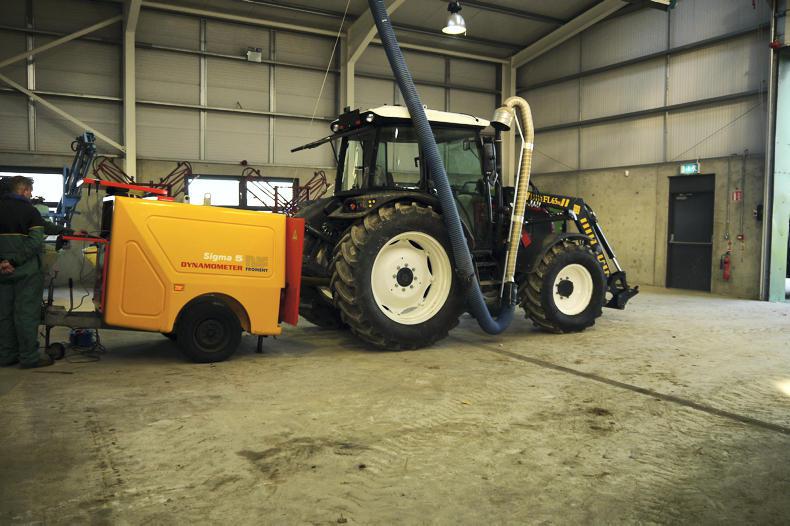
First impressions of the tractor were that this is a no-frills straightforward-to-operate machine. Entering the cab the first thing I noticed was the number of levers. At the base of the driver’s feet are three levers – two for PTO speed selection (430, 540, 750 and 1,000rpm) and one for choosing hi and low range in the tractor’s gearbox. This is not very common but it works.

The levers didn’t interfere much with driving the tractor but I noticed they were there when my feet were away from the clutch and brake pedals. For the time we had the tractor, we used the low-range gearbox very briefly and tested the PTO power in the 540rpm speed.
Getting the tractor started was a straightforward affair. Direction is controlled from the right-hand side of the cab and the clutch must be used, which became a bit of a chore when using the front loader. Shuttling between forwards and reverse, my left knee soon let me know this is a mechanical transmission that would welcome a clutchless shuttle with open arms.
This is not ideal but this is a tractor aimed at farmers who want a “get-in-and-go”. A welcome gearbox automation in the form of clutchless hi-low split in each gear does make it more user-friendly to drive. The loader lever is also positioned on the right-hand side.

Looking down to the right of the seat are logically laid-out mechanical hydraulic control levers, hitch control, PTO engagement, 4WD and differential lock. The neat grouping of these controls means the driver doesn’t have to reach too far for anything and all are clearly labelled with little reason for confusion. The pick-up hitch is also released via a T-bar-type handle attached to a cable between the gear levers and the hitch controls.
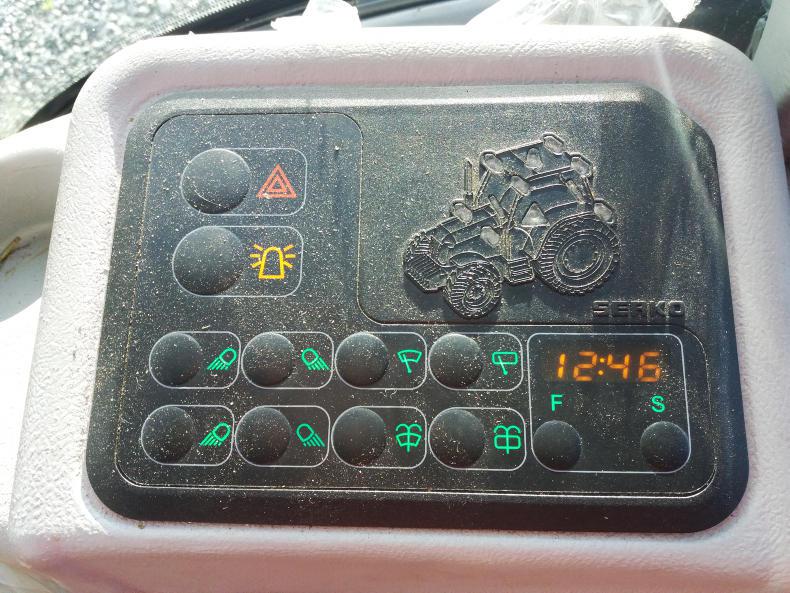 Situated above this bank of controls is a blister-pad light control panel which also includes the front and rear wipers, hazard lights, beacon switch and a clock. The panel even has small LEDs to show which lights are turned on and off – a clever touch from a tractor aimed at the lower end of the market.
Situated above this bank of controls is a blister-pad light control panel which also includes the front and rear wipers, hazard lights, beacon switch and a clock. The panel even has small LEDs to show which lights are turned on and off – a clever touch from a tractor aimed at the lower end of the market.
Above my head to the left is the fan-speed control and air conditioning. It was a straightforward affair with two buttons each for both fan speed and temperature control.
Visibility
The tractor is fitted with a gradually sloping bonnet with vents at the front for air flow to the engine.
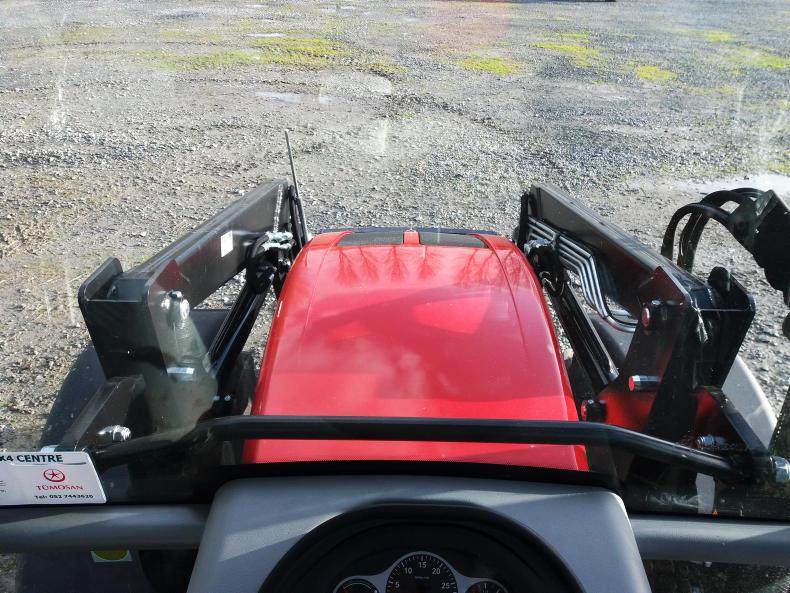
Loader visibility could be described as good but restricted when it came to attaching implements. This is a subjective observation as the loader fitted to the tractor sits closely to the front.
Some people want a loader further out from the tractor for greater reach and lift height making for better visibility, whereas others want a tidier fit such as what we had with the Rossmore FL65m. At full height, however, I did have to strain my neck to see where the very front of it was.
 The view to the wheels could be described as fair, with the loader and large mudguards obstructing a clear view to the front tyres. Otherwise, visibility is good, with the B pillars set far enough back to give a clear view both left and right, with twin mirrors fitted in line with tractor mother regulations (TMR).
The view to the wheels could be described as fair, with the loader and large mudguards obstructing a clear view to the front tyres. Otherwise, visibility is good, with the B pillars set far enough back to give a clear view both left and right, with twin mirrors fitted in line with tractor mother regulations (TMR).
Rearwards to the linkage was also good with no major obstruction apart from a wide cab cross-member that latched the window closed, meaning I did have to make an extra effort to look over it to see the linkage arms.
Speaking of linkage, when the pick-up hitch was dropped it was hard to tell where it was as it didn’t swing out from under the tractor. This isn’t ideal but with a few attempts I eventually lined up the hook with the trailer.
Serviceability
Raising the loader completely and fitting a safety stay gave us access to the tractor’s one-piece bonnet. Once this was lifted, we were able to access the radiator, air filter, oil cooler and battery. Unfortunately, the cooler pack required a spanner to release it which would discourage it being blown out and kept clean.
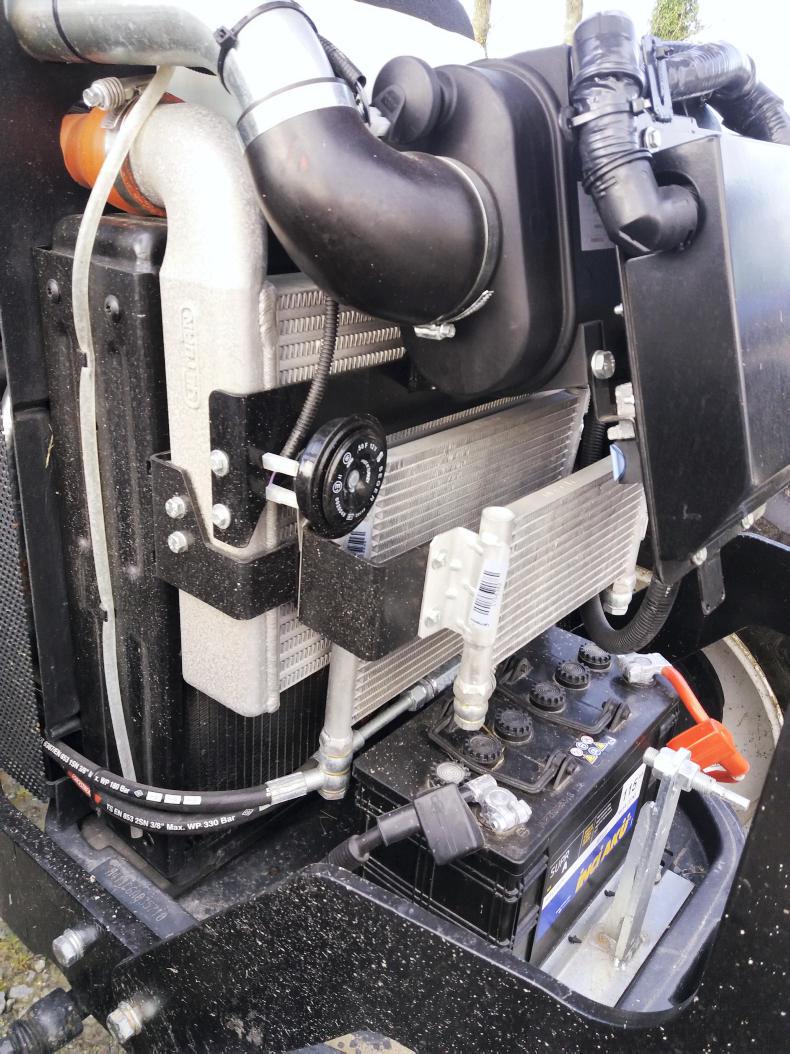 The battery was very accessible at the front just inside the bonnet, which would be handy if jump-starting another vehicle. Engine oil filter, fuel filter and water separator are located on the rear left-hand side of the engine, with access best described as decent. Locating them all in one area means you are not likely to forget changing or inspecting one of them.
The battery was very accessible at the front just inside the bonnet, which would be handy if jump-starting another vehicle. Engine oil filter, fuel filter and water separator are located on the rear left-hand side of the engine, with access best described as decent. Locating them all in one area means you are not likely to forget changing or inspecting one of them.
The loader brackets did make getting both hands around the filters a bit of a struggle. Access to the engine oil filler and dipstick was also unobstructed. Around the rear of the tractor, checking the rear axle oil level is very straightforward, with a sight glass located above the right lower linkage arm.
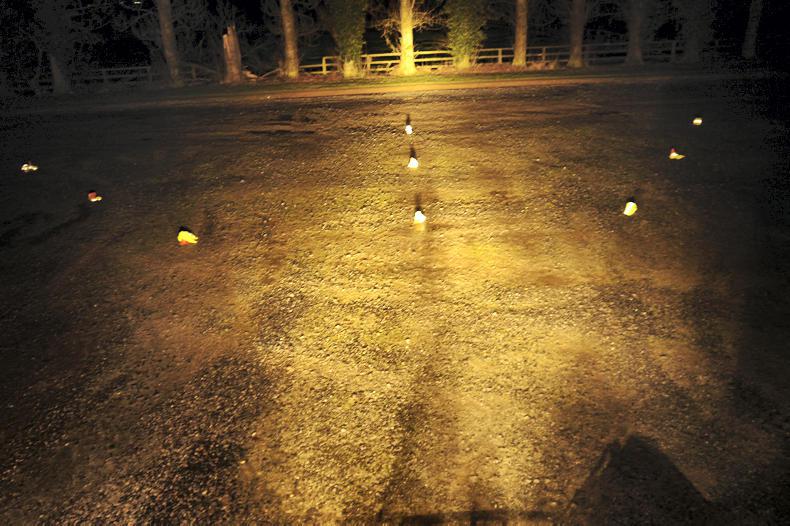
Lighting
As these tractors can spend a lot of time working in dark sheds and feeding cattle in both early mornings and late nights, we ran a simple lighting test. After nightfall, we parked the tractor in an area devoid of all other artificial light. Cones with reflective strips were set up at 5m intervals to the left, middle and right of the front of the tractor. Once set up, all the tractor’s lights were turned on.
To record this, we placed a camera on the roof of the cab and took a shot both forwards and rearwards. The results from the Armatrac test showed great lighting directly in front of the tractor’s headlights, with less strength coming from the four work lights fitted. Lighting in the areas to the left and right of the front of the tractor were adequate. Rearwards, the lighting could be described as fair.
The lighting immediately behind the tractor was good but further back the light faded.
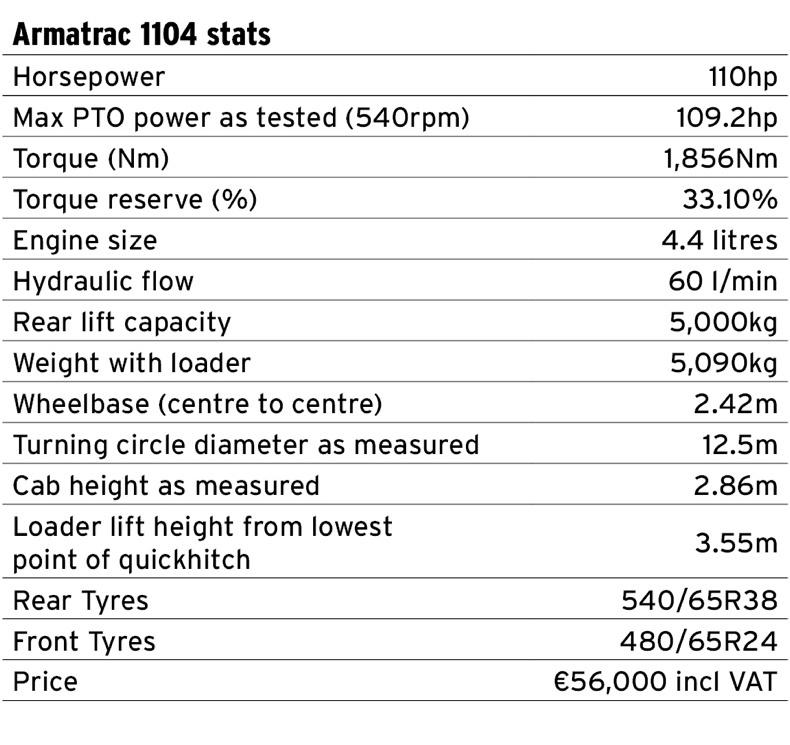
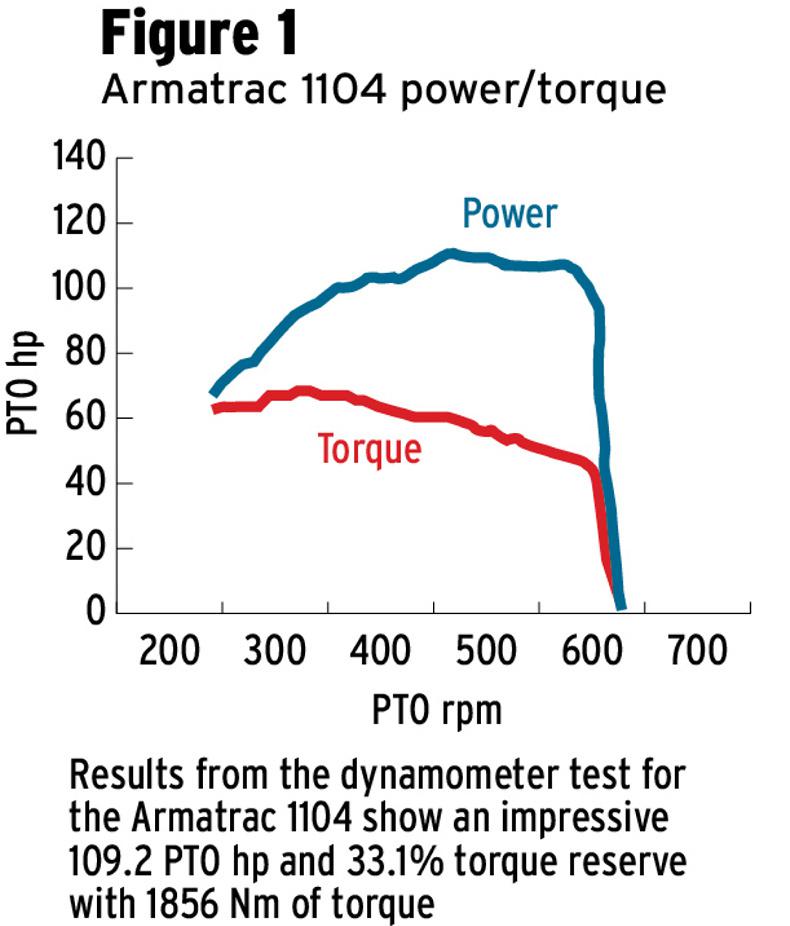
This is a no-nonsense straightforward-to-operate tractor and it is priced accordingly. The technology and comfort could be best described as functional.
There is no plethora of push-button switches but rather levers to get the job done. It will not appeal to the high-end customers looking for all the creature comforts and that’s exactly who Armatrac is targeting.
This tractor will appeal to stock farmers not spending long hours every days in it but rather feeding cattle or cows in the mornings and evening along with the usual run-of-the-mill jobs in the summer, like topping, fertiliser spreading and slurry spreading.
See more photos in our gallery above.

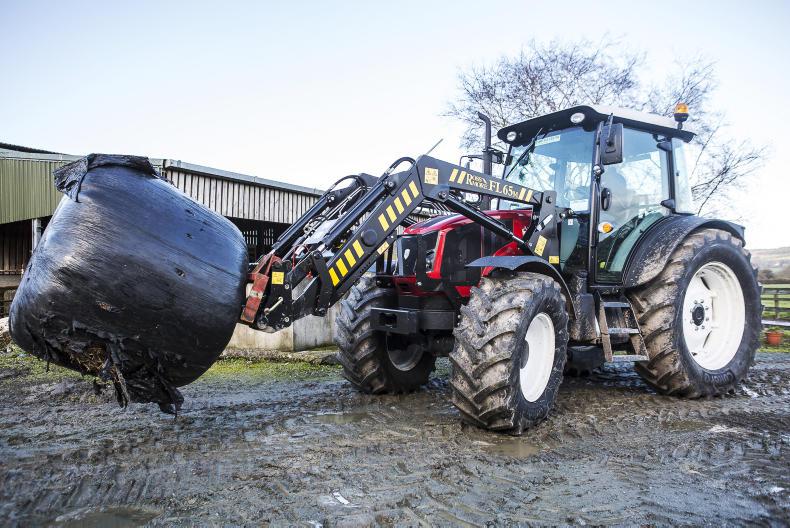




 This is a subscriber-only article
This is a subscriber-only article


































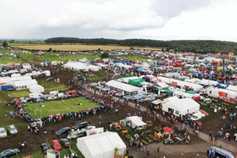



SHARING OPTIONS: